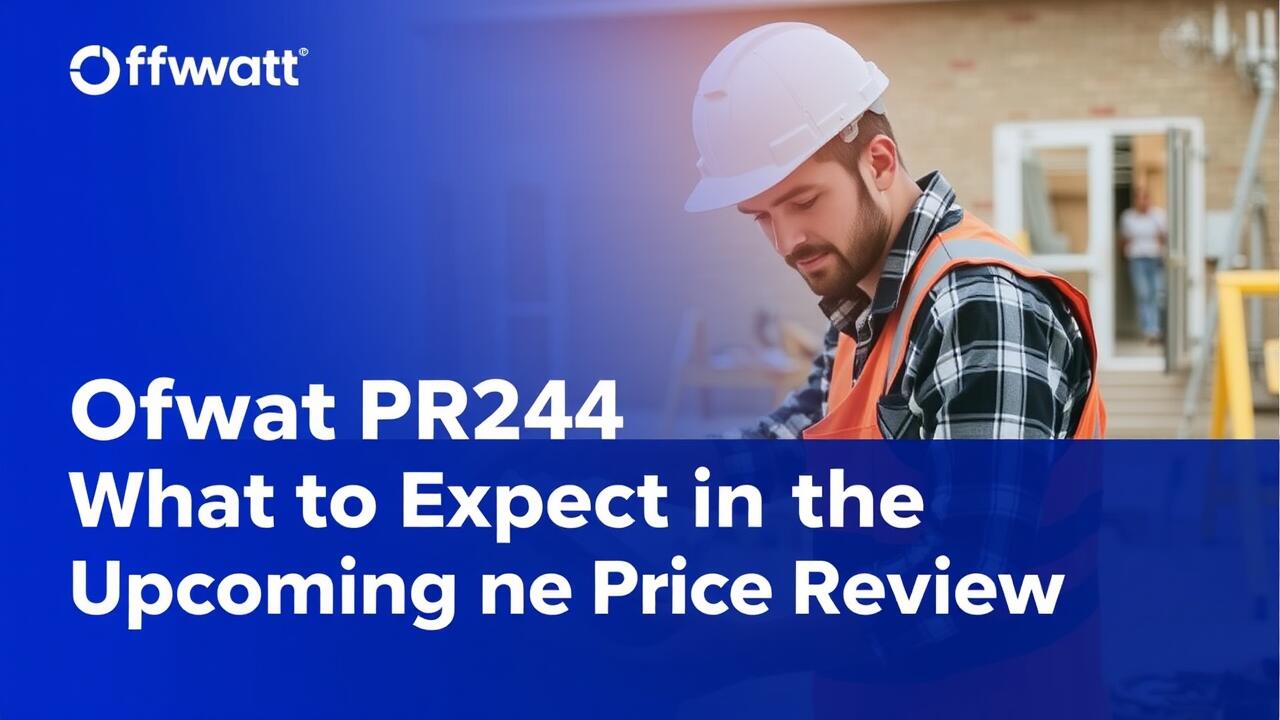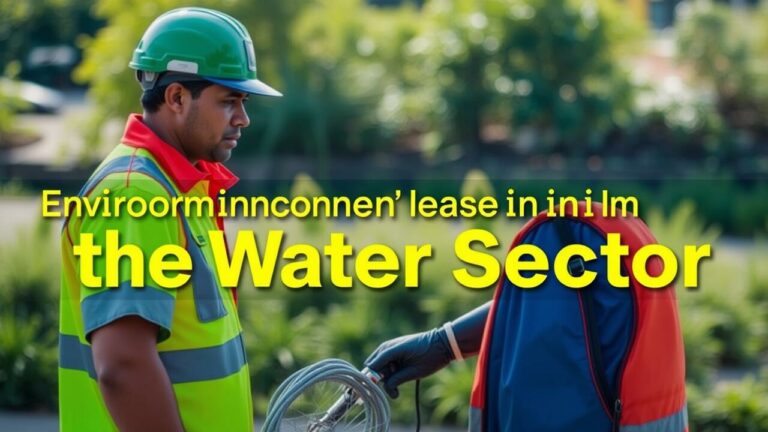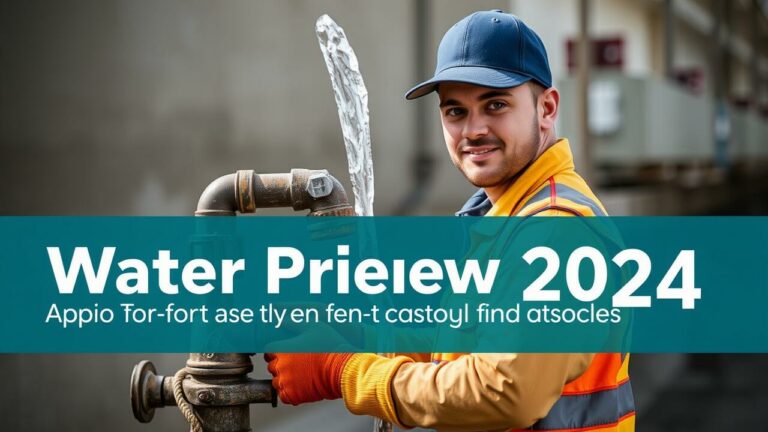Ofwat PR24 Updates What to Expect in the Upcoming Price Review
The forthcoming Price Review (PR24) stands as a pivotal juncture for water companies, an electrifying chance to transform their customer service game. Imagine this: not just a tick on the box for satisfaction but a genuine leap towards building trust and loyalty that resonates with consumers. It’s about time these companies rolled out structured strategies—think active listening mixed with responsive communication—that truly amplify customers’ voices, ensuring every concern is met with swift action.
This shift isn’t merely cosmetic; it signals a profound evolution in how companies engage with the people they serve. Picture personalized service becoming the norm, where individual needs and preferences take center stage! Embracing proactive tactics to foresee and tackle issues could be a game changer, enhancing experiences like never before.
Digital platforms are set to become indispensable tools in this landscape of interaction—a vital thread woven into the fabric of utility operations. By harnessing data analytics alongside real-time customer feedback, these firms will unlock patterns and subtleties tied to service delivery that were previously elusive. Such insights empower them to refine their offerings dramatically while ensuring timely responses and solutions flow seamlessly to customers’ fingertips.
This strategic pivot shines a light on an undeniable truth: in today’s water industry, prioritizing customer satisfaction isn’t just nice-to-have; it’s essential for lasting success amidst ever-evolving challenges!
Strategies for Improving Customer Satisfaction
In the ever-shifting terrain of the water sector, grasping customer desires becomes not just important but essential for boosting satisfaction levels. Companies are diving headfirst into a sea of customer feedback mechanisms, fishing for insights on service delivery while simultaneously pinpointing areas ripe for enhancement. By bolstering communication channels, organizations ensure that customers are kept in the loop with timely updates about service disruptions or shifts in billing processes—this transparency breeds trust like nothing else. Moreover, bespoke engagement initiatives, such as enlightening customer education programs centered around water conservation, serve as crucial threads in weaving stronger ties with users.
Yet another cornerstone strategy springs from harnessing cutting-edge technologies to streamline interactions within services. The deployment of chatbots and AI-driven solutions catapults efficiency to new heights in customer service operations—response times shrink and personal touches flourish! And let’s not overlook the significance of training representatives; equipping them to tackle complex inquiries with both empathy and expertise can transform ordinary encounters into extraordinary experiences. Regularly gauging service performance through meticulously crafted customer satisfaction surveys equips organizations to adapt swiftly and refine their strategies in real time—a necessary dance to keep pace with ever-evolving expectations.
| Strategy | Description | Benefits |
|---|---|---|
| Customer Feedback Mechanisms | Implementing tools such as surveys and review platforms to gather insights. | Identifies areas for improvement and enhances service delivery. |
| Communication Channels | Providing timely updates on service changes and disruptions. | Builds trust through transparency and increases customer satisfaction. |
| Customer Education Programs | Initiatives focusing on water conservation and responsible usage. | Strengthens customer relationships and promotes sustainable practices. |
| AI-Driven Solutions | Using chatbots and automation to improve interaction efficiency. | Reduces response times and enhances personalization in service. |
| Training Representatives | Equipping customer service agents with skills to handle complex inquiries. | Transforms customer experiences into memorable interactions. |
Innovations in Water Management
The water sector is undergoing a fascinating metamorphosis, spurred by the infusion of cutting-edge technologies that are revolutionizing how we manage this precious resource. Think smart meters and Internet of Things (IoT) devices—these aren’t just gadgets; they’re game-changers in real-time data collection! Water companies can now delve into usage patterns with an eagle eye, catching leaks in the act and responding to customer needs like never before. And let’s not overlook predictive analytics—this nifty investment arms utilities with the foresight to anticipate demand shifts and tackle resource management head-on.
But wait, there’s more! Innovative methods for treating and distributing water are surging forward, emphasizing sustainability alongside efficiency. Techniques like membrane technology and bioremediation are turning traditional wastewater treatment on its head, enhancing overall water quality while promoting reuse. Meanwhile, integrated resource management strategies shine a light on the power of collaboration across various sectors—a vital move if we want our water systems to be resilient enough to withstand the mounting pressures from climate change and swelling populations. This isn’t just evolution; it’s a bold leap towards a smarter future in water management!
Adoption of New Technologies
The water industry is experiencing a dramatic upheaval, propelled by the surge of cutting-edge technologies. Picture this: smart metering devices popping up like mushrooms after rain, real-time data analytics weaving intricate patterns of information, and artificial intelligence entering the scene with its promise of efficiency. These innovations are not just enhancements; they’re game-changers that unlock newfound operational prowess and offer profound insights—insights that can transform service delivery into something truly remarkable.
But wait, there’s more! Remote sensing and IoT applications step into the spotlight, granting utilities an eagle-eyed surveillance over water quality while deftly pinpointing leaks that would otherwise go unnoticed. The result? A significant reduction in both wastage and expenses—a win-win for all involved.
Yet amid this whirlwind of progress, investing in digital infrastructure becomes non-negotiable—it’s the backbone supporting these avant-garde technologies. Enhanced connectivity creates an orchestra where systems communicate swiftly and seamlessly; emergencies prompt reactions faster than you can say “water crisis,” dramatically elevating overall management capabilities. And let’s not overlook cloud-based platforms—they’re not just storage solutions but treasure troves for big data analysis—enabling predictive maintenance strategies to flourish alongside astute strategic planning.
As this sector boldly embraces such advancements, utilities find themselves armed to meet regulatory challenges head-on while simultaneously catering to their customers’ ever-evolving demands. The future looks bright—and fluid!
Benchmarking and Performance Metrics
In the ever-shifting terrain of the water sector, crafting strong benchmarking and performance metrics is not just important—it’s vital for fostering accountability and elevating service delivery to new heights. Companies are diving headfirst into standardized measures that assess everything from operational efficiency to customer satisfaction and environmental impact. These metrics create a tapestry of meaningful comparisons across the industry, allowing firms to unearth best practices while pinpointing areas ripe for enhancement. Stakeholders, be they regulators or consumers, reap the rewards of transparency in these evaluations—a key ingredient in building trust and spurring proactive involvement in initiatives aimed at improving performance.
But wait! There’s more! The infusion of performance metrics into everyday operations can dramatically reshape strategic decision-making processes. With data-driven insights at their fingertips, water companies find themselves armed with the ability to allocate resources wisely and prioritize much-needed infrastructure investments. This laser-focused approach doesn’t merely tackle immediate operational hurdles; it aligns seamlessly with long-term sustainability aspirations. As utilities scramble to meet regulatory demands alongside consumer expectations, the importance of thorough benchmarking will only swell—igniting a wave of improvements in efficiency, reliability, and overall service quality that may very well redefine what we expect from our water systems.
Measuring Success in the Water Sector
The effectiveness of water service providers can be gauged through a myriad of performance metrics, each revealing layers of insight. Picture this: key indicators like water quality, service reliability, and customer satisfaction levels weaving together to create a vivid tapestry of operational efficiency and service delivery. Regulators and stakeholders scrutinize how adeptly these companies meet established benchmarks—it’s not just about compliance but also igniting improvements and stoking the fires of competition within the industry.
But wait! Beyond those traditional metrics lies another realm where financial performance reigns supreme—a vital cog in the machinery of success. Think revenue generation dancing alongside cost management while investment in innovation pirouettes into long-term sustainability. A holistic assessment that marries customer-centric measures with robust financial indicators paints a more nuanced picture of a utility’s overall performance landscape. And as we navigate this ever-evolving industry, continuous tracking of these metrics becomes paramount; transparency and accountability are no longer mere aspirations—they’re essential practices paving the way forward.
Challenges Facing the Industry
The water sector is grappling with a myriad of challenges that complicate its quest to provide consistent services. Picture this: crumbling infrastructure looming like an ever-present specter, as countless water systems cry out for urgent upgrades and repairs. These glaring deficiencies do more than just inflate operational costs; they jeopardize the very essence of water quality and the reliability of supply itself.
But wait, there’s more! The regulatory landscape is in constant flux, morphing into a labyrinth where companies must tread carefully—each turn demanding fresh investments in compliance and safety protocols. It’s a dizzying dance between necessity and obligation.
Then there’s sustainability—a formidable hurdle lurking in the shadows. As the industry wrestles with climate change and mounting environmental concerns, firms find themselves at a crossroads. They’re caught in an intricate balancing act: embracing innovative technologies while grappling with tight budgets. The push for greener alternatives often feels like trying to fit a square peg into a round hole when it comes to keeping prices manageable for consumers.
Navigating through these tangled webs requires deft maneuvering from stakeholders who aim to ensure that their investments not only enhance service delivery but also keep affordability firmly within reach for all customers involved.
Addressing Infrastructure and Investment Needs
The water sector is wrestling with the weighty burden of aging infrastructure, a reality that cries out for substantial upgrades and diligent maintenance. Regulators and utility companies find themselves at a crossroads, needing to work hand-in-hand to pinpoint those critical areas screaming for investment. The quest to ensure the reliability and resilience of our water systems isn’t just about patching up old pipes; it demands a careful prioritization of projects based on urgency and potential impact—an intricate dance between needs and resources.
To navigate these turbulent waters, implementing robust risk assessment frameworks becomes paramount, aiding in crafting informed decisions regarding where capital should flow. Yet that’s just scratching the surface! Financial models require a thorough reevaluation—they must evolve to reflect these urgent infrastructure demands.
Stakeholders can’t afford to think narrowly; they should explore holistic funding strategies that embrace public-private partnerships alongside innovative financing mechanisms that break from tradition. And let’s not overlook community engagement—it’s vital! Involving local voices in the decision-making process cultivates transparency and garners public support for investments deemed necessary yet often overlooked.
Ultimately, an astutely crafted investment strategy serves dual purposes: it tackles today’s pressing issues while simultaneously gearing up the sector for whatever challenges lie ahead on the horizon. This isn’t merely planning; it’s preparing for a future fraught with uncertainty but ripe with opportunity if we choose wisely now.
- Identify critical infrastructure areas in need of immediate attention and funding.
- Establish a comprehensive risk assessment framework to prioritize investment projects effectively.
- Reevaluate existing financial models to align with the current demands of the water sector.
- Explore public-private partnerships as viable funding solutions for infrastructure improvements.
- Incorporate innovative financing mechanisms that can adapt to modern needs.
- Engage the community in decision-making to enhance transparency and support for infrastructure projects.
- Develop a long-term strategy that balances urgent needs with future challenges in the water sector.
Future Outlook for Water Pricing
The landscape of water pricing is on the brink of transformation, influenced by a multitude of factors that swirl together like an unpredictable storm. Regulatory shifts and changing consumer attitudes are at play, creating a complex tapestry where sustainable water management takes center stage. As this demand intensifies, utilities might find themselves compelled to innovate with pricing models that dance fluidly between reflecting the true cost of service delivery and promoting conservation efforts.
Imagine price structures morphing dynamically—adapting in response to real-time metrics of supply and demand! It’s almost poetic how these adjustments could unfold. Moreover, as customer engagement and transparency rise in priority, it becomes increasingly clear: effective communication will be paramount for pricing strategies. Water providers could venture into tiered pricing schemes—a clever tactic that not only rewards those who use less but also nudges consumers toward more efficient habits.
This dual approach serves a dual purpose: conserving precious resources while aligning with modern market expectations. In doing so, customers may feel empowered and appreciated in their choices about consumption—because after all, feeling informed is just as crucial as the numbers on their bills!
Anticipated Trends and Changes in Consumer Behavior
The ever-shifting terrain of water consumption reveals a remarkable transformation, one that pulses with an eco-conscious heartbeat among consumers. With environmental issues casting long shadows over daily life, individuals are increasingly on the hunt for sustainable choices woven into their routines. This burgeoning trend illuminates a fervent appetite for transparency—people yearn to know the origins and quality of their water sources, prompting utilities to rethink and revamp their communication strategies. By tuning in to these evolving needs, companies can cultivate trust and spur proactive involvement in conservation endeavors.
Moreover, the rise of technology is not just a background note; it plays an instrumental role in reshaping what consumers expect from their water services. Enter smart devices and slick applications that empower users to track their water usage with precision while delivering real-time insights into consumption patterns. As customers gravitate toward personalized experiences and seamless efficiency, it’s imperative for water companies to pivot and innovate accordingly. Embracing this wave of technological advancement does more than elevate customer satisfaction—it positions utilities at the forefront of catering to a consumer base that’s become savvier and more engaged than ever before.
Conclusion
The impending PR24 price review is set to ignite a wave of transformative changes throughout the water sector, a landscape ripe for evolution. Stakeholders are on the edge of their seats, ready to experience a surge in customer service initiatives that not only emphasize satisfaction but also demand swift responsiveness. Picture this: innovations in water management, turbocharged by cutting-edge technology, paving pathways toward practices that aren’t just efficient but resonate with sustainability at their core. These shifts paint a vivid picture of an industry laser-focused on satisfying both regulatory demands and the ever-evolving desires of consumers.
Yet, amidst this promising horizon looms the intricate challenge of infrastructure investment—a puzzle demanding astute navigation as the sector grapples with shifting consumer behaviors and expectations. Herein lies the crux: benchmarking performance metrics will be indispensable for gauging progress and securing accountability within water companies’ operations. And as we peer into future pricing strategies, it’s clear they’ll echo the changing tides of consumer priorities—underscoring an urgent need for flexibility not just in how services are delivered but also woven through every operational thread.







